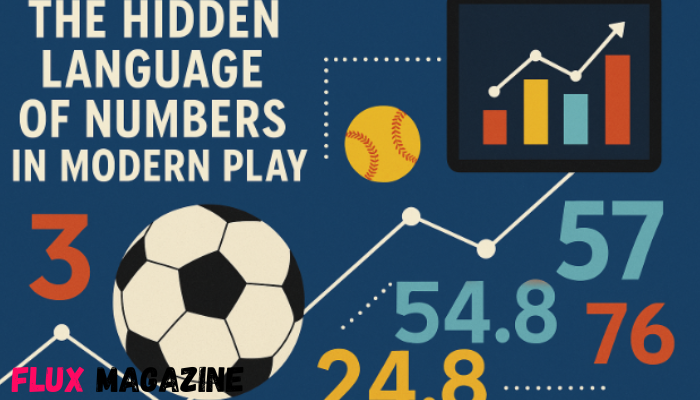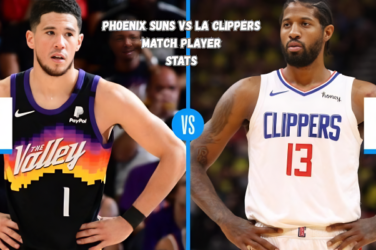Whether you’re watching a football match, placing a wager, or joining a gaming tournament, numbers are everywhere, often working quietly in the background. Data and analytics now shape the strategies of teams and athletes, the excitement for fans, and even the communities built around shared passion. This article takes you inside how stats, algorithms, and insights influence every move on the field and every choice off it. From smarter gameplay to richer fan experiences, we’ll look at how numbers have become the secret language powering today’s sports and games.
Smart betting: Where data meets intuition
Sports betting isn’t just a roll of the dice anymore. Today, numbers and analysis have changed how fans and bettors approach every match, spin, or race.
Platforms like smart betting sit at the center of this shift. They provide up-to-date reviews on new casinos and bookmakers, so you can see which options really deliver on trust, speed, and payout. I’ve found their guides helpful when trying out a new sportsbook, nothing beats an honest breakdown from someone who’s done the research.
What sets these platforms apart is their in-depth analysis of odds, statistics, and strategy. Instead of guessing or relying on instinct alone, bettors now have access to expert tips that break down trends, team dynamics, and even weather conditions for upcoming games.
This blend of passion and precision lets users enjoy the thrill while making more responsible choices. In my experience, it’s changed conversations with fellow fans. Now we talk about expected goals in football or hot streaks in tennis, details that used to be reserved for insiders.
If you want to keep your edge sharp without losing sight of why you play in the first place, it pays to let data support your instincts, not replace them.
How analytics is redefining performance and strategy
Sports has shifted from instinct-based decisions to data-informed planning at nearly every level.
Today, numbers significantly influence how athletes train, how coaches call plays, and how managers construct winning teams.
I’ve seen clubs that lean into analytics quickly spot trends, catch weaknesses, and make smarter choices on and off the field.
The result is a competitive edge for those who embrace data, not just in results, but in the day-to-day process of improvement.
Tactical innovation through data
In 2024, tactical success rarely comes down to luck alone. Teams now rely on real-time stats and sophisticated metrics to adapt during games, not just before or after them.
I’ve watched coaches with live access to player tracking use it to switch formations or target vulnerable opponents mid-match. This isn’t guesswork, it’s reacting faster because the numbers highlight what matters most.
A Analytics in Team Strategies review from 2024 describes how sports organizations using real-time data widgets adjust tactics based on player performance analytics. The teams featured saw impressive results by weaving these insights into both strategic planning and split-second game decisions.
It’s not just about more data, it’s about using the right information at the perfect moment. That’s where teams pull ahead today.
Personalized training and injury prevention
Wearables have changed how athletes train by tracking everything from heart rate to stride length throughout a session.
This constant feedback lets coaches tailor workouts for each player, no more generic plans that ignore individual needs or warning signs. If someone’s fatigue spikes or their movement patterns shift, trainers can step in before an injury happens.
The difference is night and day compared to old-school approaches, where players sometimes pushed too hard without realizing it. Now, many top clubs spot risks early and keep stars healthy through a blend of technology and coaching know-how.
As an example, I’ve seen footballers get their workload adjusted midweek after wearables flagged minor changes in recovery. It keeps everyone closer to peak form when matchday arrives, and reduces time lost to avoidable injuries. That’s a win for both players and clubs alike.
The fan experience: Numbers behind the passion
Fans are no longer just spectators, they’re part of the action thanks to the rise of sports analytics in everyday life.
With easy access to live stats, advanced metrics, and interactive features, supporters can follow their favorite teams in ways that were impossible a decade ago.
Apps deliver real-time updates and breakdowns right to your phone, while fantasy leagues invite fans to act as team managers using data-driven decisions.
This constant stream of information keeps supporters engaged before, during, and after every match.
The result is a deeper sense of connection, not just with teams but also with fellow fans, turning every game into a shared experience fueled by numbers.
Fantasy sports and predictive engagement
Fantasy sports have become more than just a side hobby for millions, they’re now a main event in their own right.
What makes them so addictive is the way real-time stats and predictive models give fans a stake in every play and player decision throughout the season.
You’re not just cheering; you’re managing a virtual roster, making trades, and constantly adjusting based on live data streams from actual games.
This hands-on approach keeps engagement high. It’s common to see office pools or friends’ leagues turn into year-long rivalries that mirror the highs and lows of professional competition.
Fantasy Sports Impact Study highlights that fantasy platforms do more than entertain, they strengthen fan identity and build tight-knit communities. The study found participants not only felt closer to their teams but also invested more time learning about strategy and player performance. In my own group, trading banter over fantasy lineups sometimes gets more heated than discussing the actual game scores, that’s the power of numbers at work.
Social debate and data-driven storytelling
If you scroll through any sports forum or Twitter feed during a match, it’s obvious how much data shapes fan conversations now.
Supporters trade heat maps, stat breakdowns, or player comparisons as if they were currency. The best arguments aren’t about feelings alone, they’re backed up by visualizations and data pulled from official sources or crowd-sourced platforms like Reddit or Discord channels dedicated to analytics discussion.
This trend has given rise to fan-made highlight reels spliced with statistical overlays or long threads breaking down tactical shifts minute by minute. Suddenly anyone with a knack for Excel can become an influential voice in their online community.
The debates get sharper, and often friendlier, as people bring receipts instead of just opinions. In big football cultures like the UK or Brazil, these late-night discussions over WhatsApp groups often spill into pubs on matchday. Numbers have become part of the story fans tell each other about what really happened on the field. That’s changed how we argue, and how we remember great moments together.
The future of play: How AI and big data are reshaping sports and gaming
Artificial intelligence and big data are no longer buzzwords, they’re rewriting the script for both sports and gaming.
Every season, I see new tools that turn mountains of raw numbers into on-the-fly insights. Coaches tap into pattern recognition software to spot trends long before rivals do, while gaming platforms now offer real-time opponent analysis straight to your phone.
The next leap? Seamless integration, where the boundary between gut instinct and statistical probability almost disappears. This shift isn’t about removing human creativity, it’s about providing sharper feedback loops so that players, teams, and fans make smarter choices in the heat of competition.
AI-driven insights for teams and fans
Predictive analytics is changing how decisions get made both on the field and in front of a screen. Teams use scouting algorithms to uncover talent most would overlook, while fantasy apps offer personalized projections based on live data feeds.
For fans, AI-powered platforms recommend content, serve up match predictions, and even let you build simulated outcomes with a swipe. It’s not just about numbers, it’s about creating a more tailored experience from start to finish.
AI in Sports Market Forecast points out that by 2030, investment in sports-related AI is set to more than double. Teams want sharper tactical tools; leagues want better ways to keep fans hooked. These advances will shape everything from how strategies evolve mid-game to the way global audiences follow their favorites.
Balancing data with the human element
No matter how advanced our technology gets, there’s always room for intuition and heart.
I’ve seen matches where every number suggested one outcome, until an underdog rewrote the story through sheer determination. That unpredictability is what keeps people watching late into the night or nervously refreshing their apps during penalty shootouts.
Numbers can guide decisions, but they can’t capture a captain’s inspirational speech or a rookie’s breakthrough moment. The magic comes from blending sharp analytics with raw emotion, reminding us why we fell in love with sport and gaming in the first place.
Also Read: When data becomes the real MVP in sports fandom
Conclusion
The rise of analytics has turned numbers into the silent architects behind every moment in modern sport and gaming. We see data shaping decisions, fueling passion, and connecting fans with their favorite teams in ways that would have seemed futuristic just a decade ago. Yet the true excitement remains in how we balance cold, calculated insights with raw emotion and instinct. That mix is what keeps play unpredictable and thrilling. As technology advances, the real magic will always come from blending innovation with the timeless spirit of competition.


















Show Comments (0)